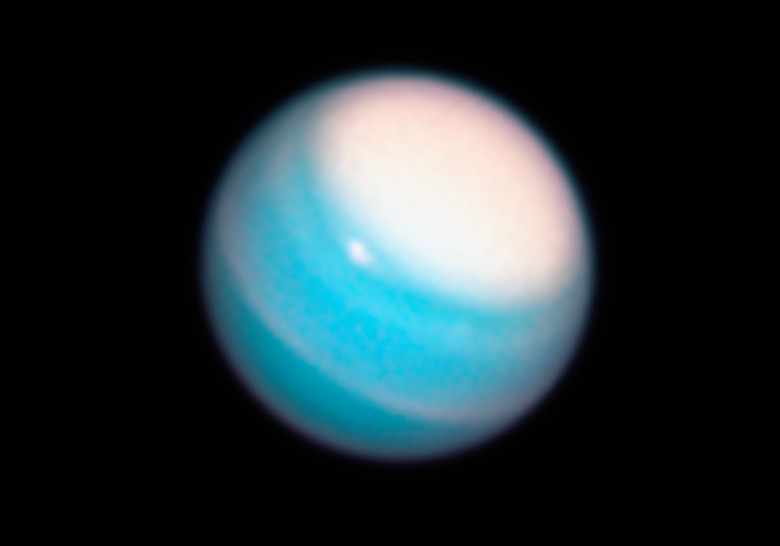Scientists Used Lasers To Reproduce Exotic Ice That Might Fill Uranus
Earth orbits the Sun at a distance that allows both liquid water and water ice to exist on its surface in ample amounts. We like to think we're pretty familiar with the various forms water can take, but new research suggests that water ice on Uranus and Neptune could take a bizarre new form that just doesn't exist here on our home planet.
It's called superionic ice, and while its existence on the distant planets in our system is still just a theory, researchers just successfully produced some of the "exotic" ice in a lab, with the help of some seriously powerful lasers.
We're all very familiar with ice as we see it on Earth, but water ice can take on more than one form based on the arrangement the molecules take. The conditions of Uranus and Neptune are thought to be such that the oxygen in water forms a crystal independent of hydrogen which continues to flow through the solid lattice like a liquid.
The existence of superionic water was first suggested in the late 1980s but actually producing a sample so that it could be examined in greater detail just hasn't been possible. Until now, that is, as researchers from the Lawrence Livermore National Laboratory just published a pair of research papers describing how they did it and what they learned.
"We wanted to determine the atomic structure of superionic water," LLNL physicist Federica Coppari, co-lead author of the research, said in a statement. "But given the extreme conditions at which this elusive state of matter is predicted to be stable, compressing water to such pressures and temperatures and simultaneously taking snapshots of the atomic structure was an extremely difficult task, which required an innovative experimental design."
Using six powerful lasers, the researchers blasted liquid water with a series of shockwaves that gradually grew more and more intense, eventually causing the water to take on a solid form despite being incredibly hot. As pressures mounted, the scientists had just a fraction of a second to scan and capture the resulting ice before its structure deteriorated, and they used an X-ray barrage to make it happen.
The experiment provided the scientists with a better understanding of the formation of this type of ice, revealing a new phase transition that took place during its formation. The work didn't prove to disprove the theory of such ice existing on Uranus and Neptune, but it may be an important step in that direction.
